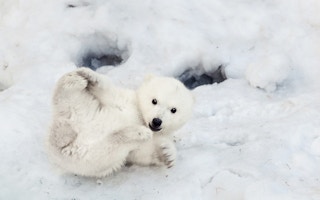Conservation research is more likely to get public attention and inspire change if it receives online news coverage and if the stories feature s popular mammals or climate change, new research by the National University of Singapore’s (NUS) Department of Biological Sciences has found.
To continue reading, subscribe to Eco‑Business.
There's something for everyone. We offer a range of subscription plans.
- Access our stories and receive our Insights Weekly newsletter with the free EB Member plan.
- Unlock unlimited access to our content and archive with EB Circle.
- Publish your content with EB Premium.
The study, ‘Quantifying the role of online news in linking conservation research to Facebook and Twitter’, found that online news was an important bridge between scientists and the wider public.
News about conservation issues can also drive policy change if it receives public support on interactive social media platorms, the research suggested.
Le Nghiem, one of the lead authors of the study, noted that “to ensure successful conservation interventions, there is a need to engage the general public”.
Facebook and Twitter help to accelerate communication between scientists and the public, she added.
Despite the potential of news coverage and social media to help the conservation cause, the study’s authors found that only five per cent of articles published in conservation journals make it to online news and that the factors influencing the spread of conservation news in online media are not well understood by researchers.
So how can conservation researchers secure wider coverage and public engagement?
Articles stand a better chance of being picked up by news sites if they are published in prominent journals such as Science or Nature because these publications were more likely to have press officers to publicise their work, the research found.
Journalists were also more likely to search these journals for newsworthy articles, added the study’s authors, who sampled research articles published from 2011 to 2013 in the eight journals regarded to have the highest impact factor by the academic community.
“
To ensure successful conservation interventions, there is a need to engage the general public. Online technologies such as Twitter and Facebook offer new opportunities to accelerate communication between conservation scientists and the online public.
Le Nghiem, researcher, Department of Biological Sciences, National University of Singapore
Conservation journals and scientists could “proactively increase coverage of their research by providing press releases or developing working relationships with journalists,” the study suggested.
News articles were also more likely to be widely shared on Facebook and Twitter if they feature climate change or ‘charismatic species’, said researchers.
These include animals such as giant pandas or polar bears, which have popular appeal, and are used by environmentalists to achieve broader conservation goals.
Environmentalists may make these animals the focus of a campaign, as they attract support to protect their natural ecosystems, which also benefits less well-known species.
As an example, the study’s authors shared that out of all the articles sampled, the one most widely shared on social media was a 2009 article on British news site The Guardian in which the author, Tony Wild, discussed the animal cruelty behind civet cat coffee and launched a social media campaign to ban its sale worldwide.
The popularity of this article and the accompanying advocacy campaign demonstrated the fact that news media is a powerful ‘fourth sector’ in the conservation process today, in addition to scientists, policymakers and the public, said the researchers.
The type of news coverage also influenced its success on different social media platforms – Facebook users were less likely to share or like negative news, but on Twitter, negative news was more widely shared than neutral news.
“Rather than using these insights to change the research they conduct, conservation scientists can use this information to choose appropriate social media channels to communicate with the online public,” the study suggested.
David Bickford, a co-author, added that doing so would “increase the awareness and effectiveness of their efforts”.
Twitter is especially underused by scientists, he told Eco-Business, adding that in addition to being more savvy with the press and social media, scientists could also promote public awareness by “bridging gaps across disciplines” such as theatre, music, and the humanities to have their findings published in a wider diversity of journals and media.

















